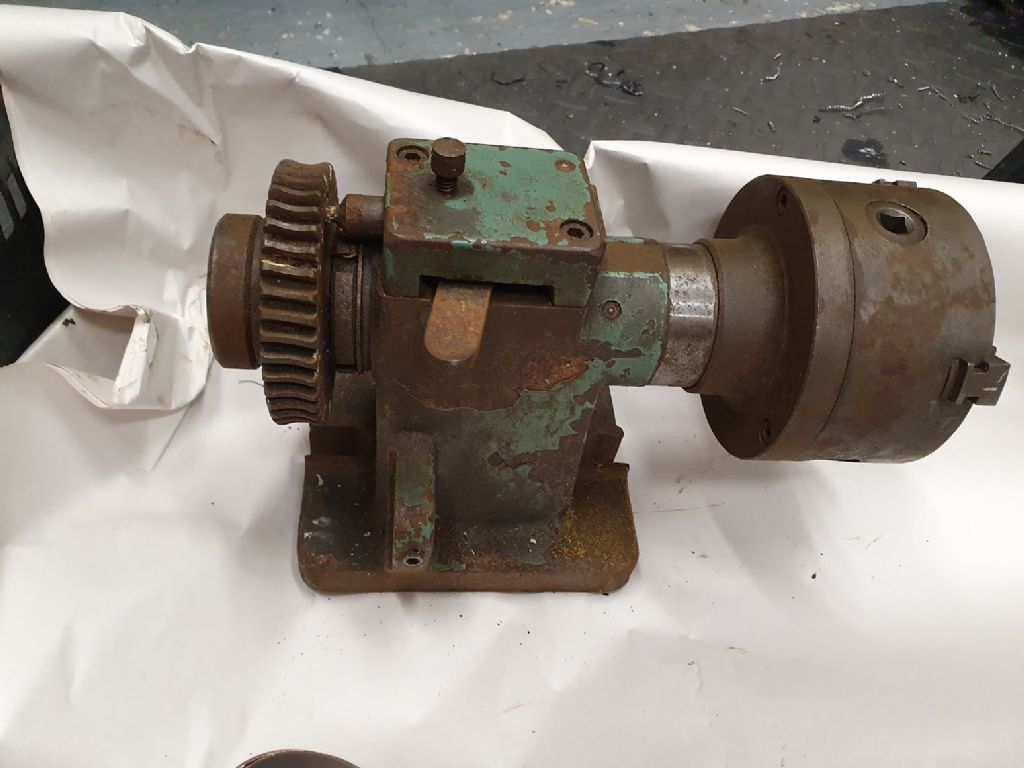YourAt–
If the head is to inch measurements the thread will probably be of Acme rather than trapezoidal form, though I don't think it's quite Acme either. Grind a cutting-tool to the wheel-tooth profile, and find the appropriate depth of cut from tables or calculations on worm-gears.
Cutting the worm thread is the reverse of what many of us face – cutting a metric thread on an Imperial lathe! I.e. needing a suitable conversion wheel if you lathe uses change-wheels. If it has a gear-box it might be capable of setting to inch-based pitches: the charts for the lathe will tell you.
Please Note: I take it you know not to use the half-nuts, but keep them engaged for cutting a pitch that is not a regular multiple of the lead-screw's. However, what is your lathe's lead-screw pitch?
Cutting a pitch close to or coarser than the lead-screw, on any lathe, puts enormous strains on the machine.You need take very light cuts, and it is often safer to rotate the lathe manually, using a hand-wheel on the end of the lead-screw.
.
Terence –
Well, it makes sense but simply does not match your chucks! It is not a standard BS or UN thread, at 10tpi, but some machine-tool manufacturers seem to have gone their own sweet ways on spindle threads.
If anyone recognises it for you as a size used by a given manufacturer you may be able to find a chuck for it. Otherwise, you may need make a backplate with screw-cut thread, and to suit whatever chuck you choose for it.
The disadvantage here of course is that you cannot transfer a work-piece from lathe to dividing-head whilst keeping it undisturbed in the same chuck.
.
This enquiry is of interest to me as I want to replace the missing worm and other parts driving the table, on a small Denbigh horizontal-mill. Its worm-wheel is still there so I can measure that.
I think Bazyle's advice to use brass, applicable in my case too!
duncan webster 1.






